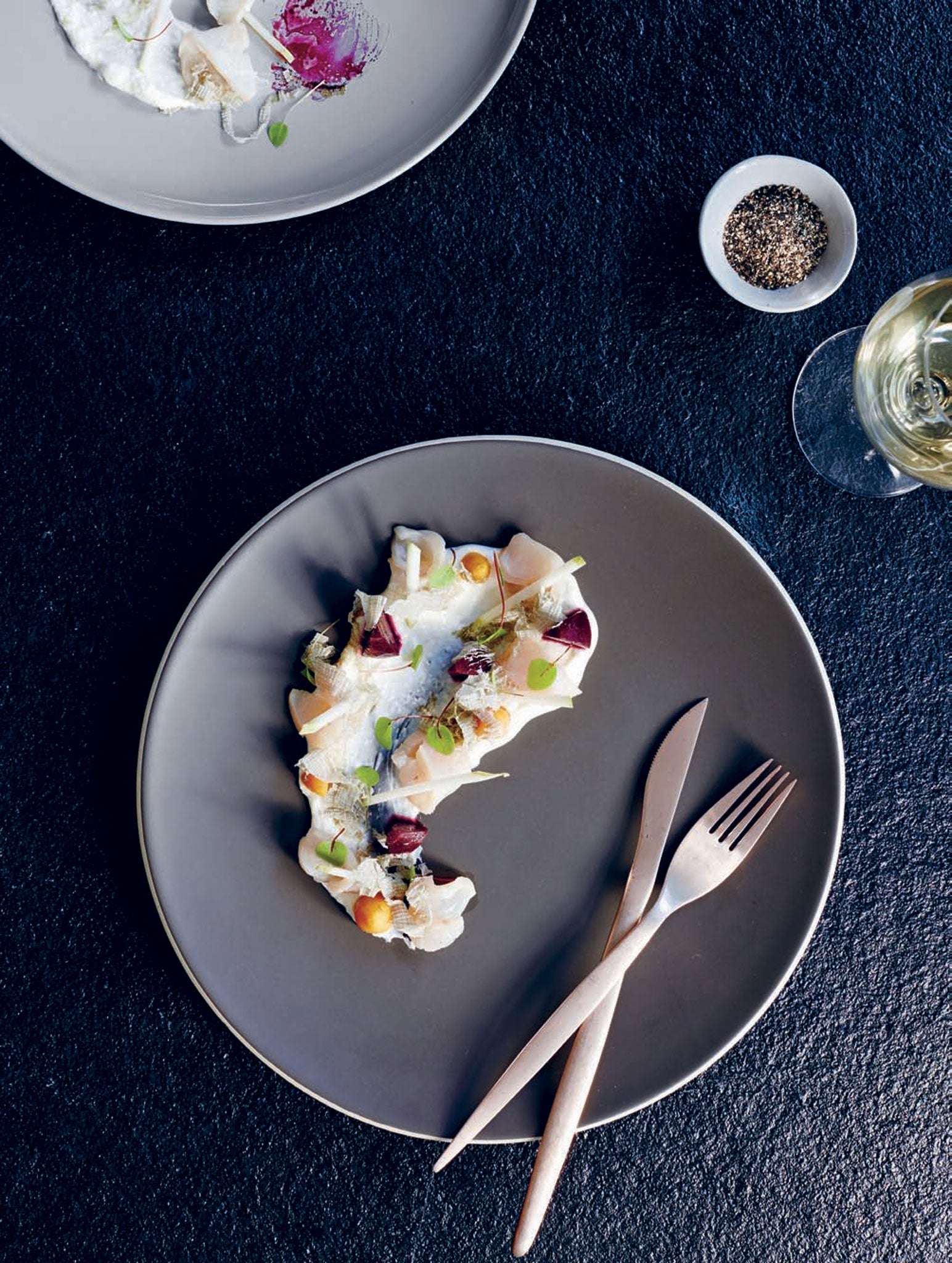Huxtable head chef Daniel Wilson reveals how to plate up like a pro
Spent hours following a complicated recipe, only for it to look a mess once you’ve got it to the table? Daniel Wilson, head chef of Huxtable, a restaurant at the forefront of Australia’s gastro renaissance, shares his top tips for making your home-cooked meals look worthy of The Wolseley

The plate as a canvas
Plates are the canvas on which we paint. Interesting plates can really enhance and shape the way a dish looks. Lighter colours stand out on black plates. People see food before they try it, so if it looks good, then our brain gets excited and the juices start flowing.
Look around you
Chefs' presentation skills take influences from everywhere. Traditionally, we could learn on the job, in books and eating out. Now, people posting pictures of their meals on Twitter and Instagram has made it easier to see what other people are doing. Some chefs really follow trends on plating as they come in and out of fashion.
Size matters
They say that in multi-course degustations, the dish should be enough to make you want just one more mouthful of the food. Deciding on the size of the dish depends on the number of courses, or number of dishes if sharing. It also depends on the richness of the protein or main component . Sometimes a dish is better with one less component, rather than one more.
Fix up, look sharp
Cleanliness and care are paramount: wipe off errant sauce with a damp paper towel.
Chic techniques
The sauce 'smear' is a common technique. To do one, place a spoonful of thickish sauce or purée on one side of the plate. Then turn the spoon over and place the back of the spoon into the middle of the sauce, then drag to the other side of the plate, or curve it like a comma in a quick but controlled manner. Also, try not to clutter up the plate with too much stuff, it will look busy. Another handy tip is to drizzle oil slowly: just put your thumb over the top of the bottle and release slightly to drizzle a thin stream.
Scales of success
I really like plating seafood dishes. Fish comes in great colours, especially king salmon and tuna. Curing fish reduces moisture and intensifies the colour. One of my favourite dishes is the smoked kingfish with horseradish cream and baby beets (see previous page). The cream is put on the plate using the 'smear'. The kingfish is twisted to give it more shape and size, then placed with decent gaps so that the cream can be seen. All of this white is asking for colour, so placing the baby beetroot along each side really stands out and teases the eye. The pear matchsticks add more height again, and a different shape. The red sorrel cress adds a certain cuteness, and the shaved kombu adds a very interesting textural look.
And finally...
The best dishes are always the ones that come back empty!
Now, take a photo
Now you've learnt to plate up, here's how to capture your dishes for posterity on your smartphone. Andrew Scrivani is the photographer for the New York Times' dining section. Here are his tips for food snaps good enough to eat
Use natural light
"Never use a flash, ever. The definition of photography is 'the manipulation of light'. You need to train yourself to see great light first; then set out to create or capture it. Using cards (even menus) to reflect and deaden light, and add shadows, is a good start."
Shoot from above
"A lot of chefs and stylists like to style plates from an overhead perspective as it gives the food a graphic, symmetrical look."
Use your smartphone to the full
"Their quality has become such that even professionals have published pictures taken with smartphones. Remember, they focus close-up pretty well – don't be afraid to use their features."
Choose the dishes you snap with care
"As a professional, I can't say that there are some dishes that never look good. But, that said, dark browns and greens need special attention, because they absorb light and have a tendency to look dull and lifeless."
'Huxtabook: Recipes from Sea, Land and Earth' by Daniel Wilson is out on Monday (£25, Hardie Grant)
Join our commenting forum
Join thought-provoking conversations, follow other Independent readers and see their replies
Comments